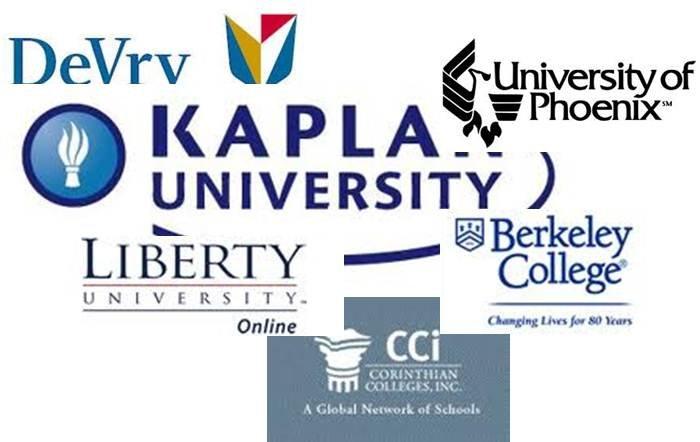A for-profit college at the center of ongoing controversy has received a staggering $1.6 billion in GI Bill funds, the highest amount allocated to any institution nationwide, according to a recent USA Today report. The substantial federal financial support, intended to aid veterans in their pursuit of higher education, has sparked debate over the effectiveness and ethics of for-profit institutions in serving those who have served the country. This article explores the implications of this funding, the collegeŌĆÖs practices, and the broader conversation surrounding GI Bill usage in the for-profit education sector.
Controversy Surrounding For-Profit College’s Record GI Bill Funding
The for-profit institution in question has ignited widespread debate due to its staggering $1.6 billion receipt of GI Bill funds, surpassing all other schools nationwide. Critics argue that despite the substantial financial support from taxpayer-funded veterans’ benefits, the college’s outcomesŌĆösuch as graduation rates and job placementsŌĆöfall short of expectations. This discrepancy has raised concerns about whether veterans are receiving a quality education or if the funds are primarily fueling an aggressive recruitment strategy.
Supporters of the college emphasize its extensive network and tailored programs designed to serve military personnel transitioning to civilian life. However, detractors highlight issues including:
- High student loan default rates among veterans
- Lack of transparency in academic outcomes
These factors have prompted calls for stricter oversight and policy reforms to ensure GI Bill funds genuinely support veterans’ education and career advancement.
Examining the Impact on Veterans and Education Quality
Veterans enrolled at this for-profit institution have accessed an unprecedented $1.6 billion in GI Bill funds, raising questions about the quality of education they receive in return. While the influx of federal dollars signals a measure of trust in the institutionŌĆÖs ability to serve military students, reports of inflated tuition costs and questionable recruitment practices suggest that many veterans may not be getting the full value of their investment. Concerns have centered around graduation rates significantly below national averages and a curriculum that some critics argue prioritizes profit over practical skills and career support.
- Veteran student outcomes: Employment rates post-graduation often lag behind peer institutions.
- Financial burden: Rising student debt despite federal support mechanisms.
- Program relevance: Questions about alignment of coursework with current job market demands.
Analysis of educational quality highlights a troubling disparity: these schools frequently leverage aggressive marketing strategies aimed at veterans, yet fail to deliver comprehensive career services. The table below outlines a comparative snapshot of key metrics between this for-profit college and national veteransŌĆÖ education averages.
| Metric | For-Profit College | National Veterans Average |
|---|---|---|
| Graduation Rate | 28% | 56% |
| Employment After 6 Months | 42% | 68% |
| Average Student Debt | $35,000 | $21,000 |
Regulatory Challenges and Calls for Greater Oversight
Despite the substantial influx of $1.6 billion in GI Bill funds, this for-profit college has continually faced scrutiny over its recruitment tactics, student retention rates, and the overall quality of education offered. Critics argue that the school’s aggressive marketing strategies disproportionately target veterans and military families, who rely on the GI Bill for educational opportunities. Lawmakers and watchdog organizations have raised concerns that lax federal regulations allow such institutions to exploit government funds without delivering commensurate outcomes for students.
Calls for enhanced accountability have intensified, emphasizing the need for stricter oversight mechanisms. Proposed measures include:
- Mandatory reporting of graduation and job placement rates linked to GI Bill recipients.
- Heightened audits on the use of federal funds to ensure compliance.
- Limitations on recruitment practices aimed specifically at veterans.
Recent legislative discussions focus on whether the billions funneled into such institutions justify a comprehensive reform of GI Bill funding criteria.
Recommendations for Protecting Veteran Students and Ensuring Accountability
To better safeguard veteran students, policymakers must implement rigorous oversight mechanisms on institutions benefiting from GI Bill funds. This includes stringent auditing of recruitment practices and academic outcomes to ensure that veterans are not exploited by aggressive sales tactics or exposed to subpar educational experiences. Establishing clear channels for veterans to report grievances confidentially can empower students and discourage institutional malpractices. Furthermore, mandatory transparency reports detailing student retention rates, graduation success, and post-graduation employment for every school receiving GI Bill payments would provide measurable accountability and enable veterans to make informed choices about their education.
In addition, federal agencies and accrediting bodies should impose consequences for schools failing to meet established standards. These actions might include temporary freezes on accessing GI Bill funds, financial restitution for misleading students, or loss of accreditation. Below is a conceptual overview of potential interventions:
| Issue | Recommended Action | Expected Outcome |
|---|---|---|
| Deceptive recruitment | Enforce strict advertising regulations | Reduce misinformation |
| Poor academic performance | Link funding to graduation rates | Improve educational quality |
| Student complaints ignored | Mandatory grievance reporting system | Empower veterans |
The Way Forward
As the debate over the role of for-profit colleges in higher education intensifies, the revelations about this institutionŌĆÖs substantial receipt of GI Bill funds underscore the urgent need for greater oversight and transparency. With veterans relying on these benefits to further their education and career prospects, ensuring that taxpayer dollars are used effectively and responsibly remains a critical challenge for policymakers and regulators alike. The story of this controversial college serves as a potent reminder of the complexities involved in balancing access, accountability, and quality within the evolving landscape of American higher education.







